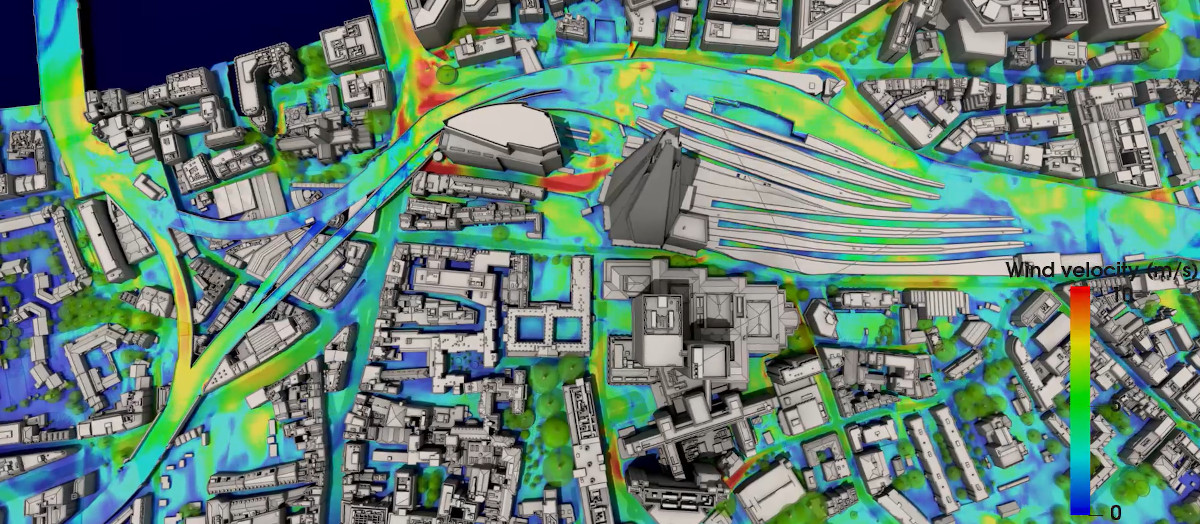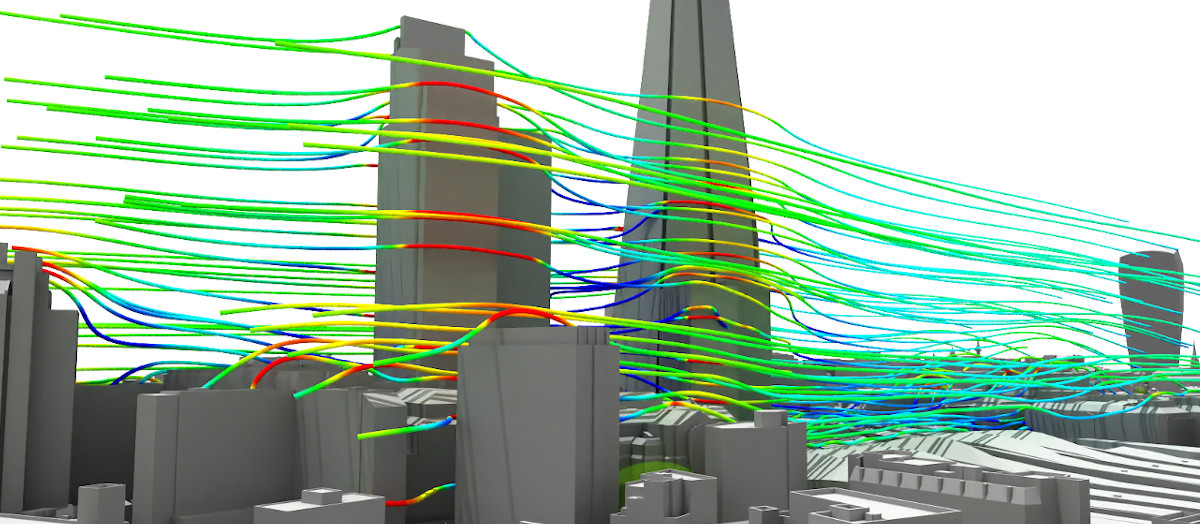SimScale has used AccuCities 3D model of London to illustrate its capabilities to help engineers and architects planning new developments in London. The platform enables them to quickly assess pedestrian wind comfort and safety and comply with the city’s microclimate guidelines.
The Wind Microclimate Guidelines for Developments in the City of London (Published August 2019, PDF) describe the required studies to assess a planned structure’s impact on the comfort and safety of nearby pedestrians and cyclists. Within the guidelines, computational fluid dynamics (CFD) is among the recommended approaches for buildings 25 meters or higher and is a requirement for buildings 50 meters or higher. Further, the guidelines encourage developers to address wind impact early in the design process and require that multiple scenarios are studied.

Cloud-based Wind comfort studies
“We are really pleased to work with SimScale. Their workflow makes it possible for our customers to comply with the CFD requirements of the Wind Microclimate Guidelines for developments in the City of London quickly and easily,” said Michal Konicek from AccuCities. “Of course there are different ways to assess these requirements, but because SimScale is cloud-based, it is possible to assess a development in a wide city area without the need for an expensive hardware. Where speed of delivery is required, customers can even run multiple simulation scenarios in parallel.”


Wide Area City of London 3D model for Wind comfort studies
Urban designers, architects and engineers using SimScale can now directly use the exact wind statistics data as defined in the guidelines, run wind analyses for 36 wind directions, and assess pedestrian wind comfort and safety according to the London LDDC criteria on an annual, seasonal, and also worst-case scenario. It’s also possible to analyse the transient wind flow patterns around the buildings using streamlines, velocity vectors and much more for each of the 36 wind directions. However, the accuracy and high level of detail of the context model is crucial.
“Using accurate 3D city models is extremely important for the overall accuracy of our simulations. AccuCities 3D model covers entire City of London area and all the required surroundings with 15 cm accuracy and this makes it ideal to use in the simulations,” said Richard Szöke-Schuller, product manager at SimScale. “But there has always been a significant cost barrier to use such a premium wide area context model. Running such premium wide area context models have historically meant overcoming barriers such as infrastructure and software licencing costs. We are pleased to be working with AccuCities to help architects overcome these barriers with our cloud-based simulation platform.”
For more information about City of London compliant Wind Comfort Simulations and Studies contact AccuCities or SimScale.
PDF version: 3D London in SimScale wind comfort simulation




